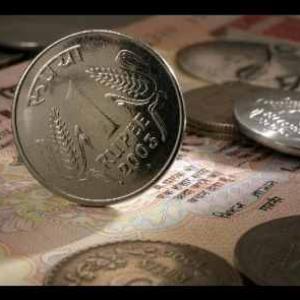In a scenario of high inflation, liquidity crunch, high interest rates and subdued business sentiment, the Budget is expected to provide certain policy directions which will shape the course of the economy in the coming months.
Infrastructure can be a game-stopper for the economy if capacity addition is not done proactively. India's infrastructure is bursting at its seams. A big push on the infrastructure front is very much needed at this point, especially keeping in mind the numerous positive spin-offs infrastructure creation has in terms of generation of employment and revenue. First and foremost, the infrastructure sector companies and SEZ units be exempt from MAT.
A big push on the infrastructure front is very much needed at this point, especially keeping in mind the numerous positive spin-offs infrastructure creation has in terms of generation of employment and revenue. First and foremost, the infrastructure sector companies and SEZ units be exempt from MAT.
The USD 30 billion annual cap on External Commercial Borrowing (ECB) may be lifted temporarily so that India Inc. is able to raise more long-term resources from abroad, which can be channelized into infrastructure.
There are decisions which need to be legislated (e.g. land acquisition) and decisions that are to be implemented by Executive Order (e.g. power sector reforms, urea price decontrol, deregulation of fuel prices, etc.). Government must expedite all steps that can be implemented through Executive Order.
Sectors that deserve immediate attention are:
- Power: The benefit under Sec. 80IA will be expiring on 31.03.2012 for the power sector. However, keeping in mind the huge demand-supply mismatch in the power sector, it is imperative for the government to extend the benefits for some more years. Financial health of the State Electricity Board is a major area of worry. Fifty-five per cent of our power production is coal-based, but despite having abundant coal reserves in the country we need to import 140 million tonne of coal every year. Of the 294 coal blocks in India, 140 are in the no-go zone. To ease coal linkages, government must take a call on the no-go criterion, or else power sector will badly suffer. Also, government must ensure that more and more private players are brought into mining.
- Roads: The progress on the national and state highways has been satisfactory. The rural roads need focused attention. Improving the transport network of the hinterlands is key to revitalizing the rural economy. To make rural road projects commercially viable for private sector, government has to design proper incentives and build those in to the road contracts (e.g. rural road developers be also allowed to build warehousing and storage facilities, cold-chains, etc. which were incentivised in last year's budget ; that would address problems likes demand-supply mismatch and wastage of food materials).
- Land acquisition has emerged as a serious challenge both for infrastructure creation and for Greenfield industries. In fact it is key to attracting any type of investment ¡V domestic or foreign. While Centre has come out with a Land Acquisition Bill, each state is free to model its own version of the land acquisition bill. Centre should take the lead in reaching out to the States and work together towards identifying tracts of non-agricultural / fallow land (which can be readily used for industrial purpose) and create a national land map of such tracts. Government can play the role of a facilitator in terms of getting all requisite clearances to expedite industrialisation. Connecting each zone to the nearest state or national highway with a cement road and providing a rail link can facilitate attracting investment.
To enhance government's revenues, early implementation of Goods & Services Tax (GST) and Direct Tax Code (DTC) is a must. DTC can be launched in 2012, if not fully at least in parts. With services accounting for 57 per cent of India's GDP, more and more services need to be brought under the tax net along with a negative list.
Expectations from NBFC industry
A healthy growth of the Micro, Small and Medium Enterprises (MSMEs) is central to the government's philosophy of 'Inclusive Growth'. However, such MSMEs, spanning urban and rural India, are primarily dependent on the NBFCs for their credit needs. However, such NBFCs are constrained by a host of tax issues which need to be addressed urgently in order to facilitate such NBFCs perform their task better and in turn promote inclusive growth. The following are the expectations from NBFC sector:
1. (I) Case for Nil TDS for NBFCs
Section 194A of the Income Tax Act provides for deduction of tax at source ("TDS") at the rate of 10% on payment of interest (excluding interest on securities) to a resident. Sub-section 3 of Sec. 194A provides for non-applicability of Sec.
The additional limitations of the existing system are the following:
a) Follow up with every customer for TDS certificates every quarter (details of which are mandatory for claiming the same in the I. T. return) becomes almost impossible. NBFCs have clients who number in thousands and it is practically very difficult to collect details from everyone.
b) Even if the TDS certificate is issued by the customer, if TDS return has not been filed or not filed properly, the credit for such TDS would not be granted to the NBFC as the details of such TDS would not appear in the NSDL system.
c) Once the TDS credit is disallowed, the NBFCs have a hard time following up with the customers and the exchequer has a hard time clearing outstanding demands against NBFCs which, in reality, do not exist.
Asset Finance and Infrastructure Finance NBFCs (AFCs & IFCs), form an integral part of the financial fabric of the Indian economy. Most of the Banks are unable to reach the MSME sectors for their financing needs and hence these NBFCs bridge the gap and act as an extended arm of the Banking system in India. Such differentiation and hardship severely constrain these NBFCs in conducting their duties, which in turn, act as an impediment to Government's national goal of Financial Inclusion.
1. (II) Case for nil TDS based on Advance Tax based on average of tax paid in last 3 years
Sec. 119 of the I. T. Act empowers the Central Board of Direct Taxes (CBDT) to issue orders, instructions and directions to other I. T. authorities as it may deem fit for the proper administration of the Act. The above powers of CBDT include relaxing those tax collection provisions of the Act which are causing undue hardship to a class of assesses.
As per Sec. 295 of the I. T. Act, the Board may, subject to the control of the Central Government, by notification in the Gazette of India, make rules for the whole or any part of India for carrying out the purposes of this Act.
Rule 28AA of the I. T. Rules, 1962 prescribes two formulae as per which the officers issuing TDS certificates may compute the lower withholding tax rate under Sec. 197.
The above rule is causing undue hardship to NBFCs having large number of pan-India customers with multiple TAN numbers. With a view to alleviate the said difficulty we suggest the following amendment in Rule 28AA -
"The assessee be granted nil TDS under Sec. 197 if he agrees and/or secures payment of taxes in the current year to the tune of average of taxes paid in the last 3 years as per return." This is within the power of CBDT under Sec. 119 or under Sec. 295 read with rule 28AA.
CBDT may issue directions to the officers issuing TDS certificates to issue lower / nil withholding certificates to NBFCs onsidering the Advance Tax deposited / to be deposited by the NBFC on the basis of a scientific formula (last 3 years' average tax paid as per returns).
2. NPA calculation for NBFCs under present regime and under DTC
Although NBFCs are also regulated by the RBI just like banks or any other financial institutions, the Income Tax laws treat NBFCs differently, insofar as provisioning for NPAs, bad and doubtful debts are concerned. This discrimination severely impedes functioning of NBFCs, which in turn, thwarts the credit delivery mechanism to the MSMEs. We draw you kind your attention to this vital Direct Tax issue which you may like to review.
(I) Under section 36(1)(viia) of Income Tax Act, only the banks and financial institutions (FIs) enjoy deduction on provisions for bad and doubtful debt. A deduction of 7.5 per cent of gross total income is allowed as expenses for banks, if provision for bad and doubtful debts is made as per RBI directions, and for FIs the figure is 5 per cent.
It is pertinent to note that even the foreign banks are allowed the benefits under this section of I. T. Act, but the NBFCs are excluded, and this despite the fact that both NBFCs and banks are regulated by similar guidelines and there is in fact no material difference between the businesses carried out by NBFCs and banks.
(II) Provisions under sections 115JA and 115JB of the Income Tax Act were amended with retrospective effect starting from AY 1998-99 and 2001-02 respectively. With the amendments, any diminution in value of an asset should be added to the 'Book Profit' for calculation of MAT.
Certainly this would not have been the intent of Finance Ministry as :-
a) The budget memorandum intended to impose MAT only on the items 'below the profit line' like deferred tax provisions, dividend distribution tax, etc.
b) Further, for the NBFCs, the provision for NPAs is not merely a provision for unascertained liability, but is an administrative expense, which is a charge on the Profit &
This may be resolved by suitably amending the explanations to sections 115JA and 115JB of the I. T. Act, to exclude "all provisions made on account of NPAs / bad and doubtful debts" and rollback the "retrospective effect" of the changes made in the Finance (no.2) Act, 2009.
(III) The Direct Tax Code allows 1% of aggregate average advances of notified NBFCs only to be used as provisions for NPAs.
NPA provision should be allowed to the extent created as per the requirement of the business and should not be restricted to the minimum provisioning requirement as per RBI. It may be noted that RBI prescribes the minimum provisioning requirement for NPA.
It also to be kept in mind that allowing NPA is tax neutral, there is no loss to the government. NPA provision is allowed at the time of debit to the Profit & Loss account and taxed if the money is realised in future.
3. Case for extending Sec. 43D of the I. T. Act to NBFCs
Sec. 43D of the I. T. Act recognises the principle of taxing income on sticky advances in the year in which they are received. This benefit is already available to Banks, FIs, State Financial Corporations and Housing Finance Companies, but not NBFCs.
A significant part of the priority sector lending done by banks is to the road transport sector and banks' lending to NBFCs for onward lending to the road transport sector, is also considered as part of their priority sector lending by RBI.
Like banks, NBFCs play a crucial and prominent role especially in the rural and social sectors of the economy by providing finances for the acquisition of trucks, buses and tractors, which operate mainly in rural and semi-urban India.
NBFCs' exposure to the rural / social sectors is more direct and pronounced, since financing for acquisition of vehicles provides a spin-off benefit by creating jobs and opportunities in the rural parts of India.
Subjected, as NBFCs are, to all the prudential norms on provisioning and income recognition, it is only fair and equitable that the benefits already available to banks and FIs under the captioned sections of the I. T. Act be extended to NBFCs too. The same is supported by favourable judicial pronouncements.
4. Case for NBFCs to be exempted from paying Withholding Tax on ECB
ECBs are extremely important for India from infrastructure financing point of view because long-term domestic fund sources are scarce. Compared to domestic sources (especially in today's rising interest rate regime), ECBs are a cost-effective source of funds and thus NBFCs, to a large extent, rely on ECBs so that they are able to service their customers better by taking advantage of the domestic-foreign interest rate differential.
5. Case for higher Depreciation Rates for construction equipment
The I. T. Act allows depreciation at the rate of 100% in case of certain equipment meant for pollution control, solid waste control, mineral oil concerns, mines and quarries, energy saving devices and renewable energy devices. The Act also allows high rate of depreciation (30%) to motorcars, buses, lorries and taxies used in the business of running them on hire. The DTC also prescribes the same rates for these categories.
However, construction equipment which contribute immensely to infrastructure development are not given this benefit of higher depreciation rate when they are financed, instead the depreciation rate for such vehicles is only 15%. For other plant and machinery too, the rate is 15%. DTC also prescribes the same. This, in fact, acts as a roadblock to infrastructure development.
Additional depreciation in the first year is allowed for the manufacturing sector under Sec. 32. Keeping in mind the importance of infrastructure creation, the benefit of this additional depreciation should be extended to NBFC-AFCs which are leasing construction equipment.
6. Case for exemption from Excise / Customs / Service Tax for leasing of construction equipment
Leasing has been the most potent form of capital formation worldwide and for a developing, infrastructure deficient nation like India, it can prove to be a very cost-effective financial instrument, especially when majority of the contractors are SME players.
7. Duplicity of tax - Service Tax and VAT on same or similar transaction
When a transaction is deemed to be sale, then it cannot be treated also to be a taxable service and made exigible to service tax since transaction or part thereof for a particular and specific value can either be of sale or service and cannot be both. Two constitutional levies cannot simultaneously be imposed on same value of the transaction or part thereof.
8. Case for Exemption to NBFCs registered with RBI from the purview of Sec. 269T of the I. T. Act
X Sec. 269T of the I. T. Act was amended by the Finance Act 2002 to make it obligatory on the part of all persons including individuals to repay any loan or deposit only by an Account Payee Cheque or Account Payee Bank draft drawn in the name of the person who has made the loan or deposit if the aggregate amount of loan or deposit together with interest thereon is Rs. 20,000 or more.
X Like banks, NBFCs are also extending loans to various categories of persons including individuals in large number. However, NBFC transactions are not exempted from the operation of this provision.
9. Rule 6(3B) and Sec. 65 of the Finance Act 1994 (Service Tax)
Under the above-mentioned rule, a banking company and a financial institution including an NBFC, providing taxable service specified in sub-clause (zm) of clause (105) of Sec. 65 of the Finance Act, shall pay for every month an amount equal to 50% of the CENVAT Credit availed on inputs and inputs services in that month. Tax research unit of Ministry of Finance explained vide D.O.F.No. 3345/3/2011-TRU dated 28th February 2011, Para 1.16 of Ann-C that substantial part of the income of a bank is by way of interest in which a number of inputs and input services are used.
10. Case for Re-instating Sec. 10 (23G) of I. T. Act
The 2006 Union Budget announcement pertaining to removal of incentives on infrastructure financing under Sec. 10(23G) of I. T. Act from fiscal year 2007-08 onwards is adversely impacting the process of infrastructure creation. Under Sec. 10(23G) of I. T. Act for companies engaged in infrastructure projects by way of equity or debt or both, their net income from such investments (in the form of dividend or interest or long term capital gain) is exempt from tax.
The worst affected are the institutions like SREI, IDFC, IL&FS etc. who have already made substantial investment in infrastructure projects. Many banks who have also invested in investment projects have been affected.
11. Case for broadening the scope of Venture Capital under Sec. 10(23FB)
Of late, infrastructure projects have attracted investments in the form of Venture Capital (VC). This trend needs to be maintained in order to broad-base the sources of capital for infrastructure projects.
12. Case for reviewing Sec. 206AA
To facilitate trade and commerce and cross-border investments and lending, India has entered into double taxation avoidance agreements (DTAAs) with multiple countries. As per Sec. 90(2) of I. T. Act, provision of DTAA or provision of income tax, whichever is more beneficial to the assessee, should prevail. However, under Sec. 206AA government has made use of PAN mandatory for deduction of TDS. This in a sense overrides Sec. 90(2) and puts Indian borrowers into problem as most foreign lenders are without PAN.
13. Once in life time Settlement Commission
Presently, for resolution of tax disputes government allows an assessee to approach the Settlement Commission only once and that too when the case is pending before the assessing officer (AO). If the case has escalated to a level above AO, the once in a lifetime window also gets closed. This is leading to non settlement of disputes and delaying of revenue collection and costly litigation.
14. Case for allowing group taxation
Presently, when it comes to filing tax returns for companies with multiple subsidiaries, the filing is done individually. In some cases, it so happens that some subsidiaries are getting refund from government while others need to pay tax. In such cases government has to take the trouble of refunding select subsidiaries as well as pay interest on that amount. This is both time consuming and complex.
15. Case for promoting financing of agriculture equipment
For promoting inclusive growth, modernization of agriculture is a must. Introduction of new technology in farming and agro-processing, setting up warehouses and cold chains, etc. can do wonders for this sector which is still the source of livelihood for the majority of India's population. Green revolutions not only generate new employment, but also bolster food security of the country besides earning foreign exchange through exports.
16. Widening the scope of Sec. 80IA and extending the same to NBFCs
Presently the benefits under Sec. 80IA accrue to certain sectors, but NBFCs which lend money to those sectors are deprived of the benefits. Without the support of NBFCs, the sectors covered under Sec. 80IA cannot achieve their goal i.e. growth of 80IA sectors is dependent on NBFCs.









